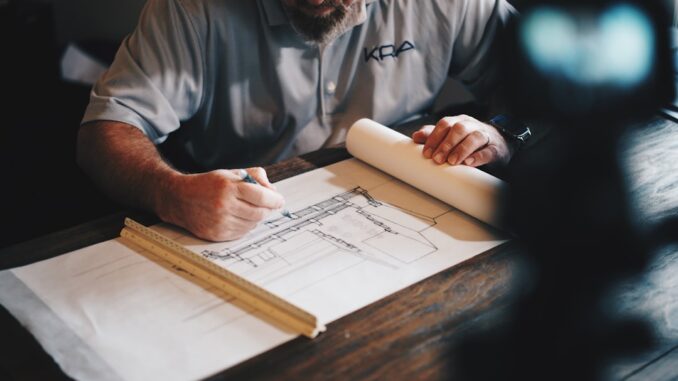
Embarking on a building project? Securing planning permission is often the first hurdle. Architects, with their expertise, can guide you through this process, enhancing your chances of approval.
1. Engage Early with Local Authorities
Before submitting your application, consider a pre-application consultation with your local planning authority. This proactive step allows you to understand potential concerns and align your proposal with local policies. As noted by the National Housing Federation, such engagement can provide valuable insights into your site’s specific requirements. (housing.org.uk)
2. Conduct Thorough Research
Understanding local planning policies is crucial. Researching the development plan of your Local Planning Authority (LPA) will help you grasp the guidelines that govern your area. This knowledge enables you to design a proposal that aligns with local expectations. (rodicdavidson.co.uk)
Successful low-energy building design hinges on careful planning. Focus360 Energy can help.
3. Develop High-Quality Designs
A well-thought-out design can significantly influence the success of your application. Ensure your plans are detailed, accurate, and considerate of the surrounding environment. Incorporating elements that reflect local architectural styles can also be beneficial. (self-build.co.uk)
4. Engage with the Community
Building positive relationships with neighbors and local residents can be advantageous. Informing them about your plans and addressing any concerns can reduce potential objections. As highlighted by Love Property, open communication often leads to smoother project progression. (loveproperty.com)
5. Prepare Comprehensive Documentation
Submitting a complete application with all necessary documents is essential. This includes detailed plans, design statements, and any required reports. Thorough documentation demonstrates professionalism and can expedite the review process. (housing.org.uk)
6. Address Potential Objections
Anticipate possible concerns and proactively address them in your application. This might involve adjusting your design to mitigate issues like overshadowing or privacy concerns. Being responsive to feedback can enhance the likelihood of approval. (loveproperty.com)
7. Understand the Appeal Process
If your application is refused, you have the right to appeal. Understanding this process and the grounds for appeal can be crucial. As noted by Savills, being prepared to navigate the appeal process can be beneficial if initial applications are unsuccessful. (savills.co.uk)
8. Stay Informed and Flexible
Planning regulations can change. Staying updated on local policies and being willing to adapt your plans accordingly can improve your chances of success. Engaging with the planning process as a collaborative effort rather than a transactional one often yields better results. (housing.org.uk)
By following these steps, you can navigate the planning permission process more effectively, increasing the likelihood of your project’s approval. Remember, thorough preparation and proactive engagement are key to success.
References
-
National Housing Federation. “Ten top tips for securing planning permission.” (housing.org.uk)
-
Love Property. “Planning permission: How to make a successful application.” (loveproperty.com)
-
Savills. “How to get planning permission.” (savills.co.uk)
-
Build It. “Planning Permission: How to Get the Planners on Your Side.” (self-build.co.uk)
-
Build It. “Designing for Planning Approval Success.” (self-build.co.uk)


So, engaging early with local authorities, huh? Does that mean architects are fluent in “bureaucratic-ese”? I’m picturing them with Rosetta Stone for planning regulations, ready to decode the path to approval!
That’s a funny image! While we might not have a literal Rosetta Stone, understanding the nuances of planning regulations is definitely a crucial skill. Early engagement helps us translate project visions into proposals that align with local requirements, making the process smoother for everyone involved. It’s about finding common ground!
Editor: FocusNews.Uk
Thank you to our Sponsor Focus 360 Energy
So, architects are like building whisperers, engaging with the community to avoid NIMBY-ism. Do they offer classes on charming your neighbors out of objecting to your dream extension? I bet that’s a more useful skill than CAD!
That’s a great analogy! While “Charming Your Neighbors 101” isn’t officially on the curriculum, community engagement is a key part of what we do. Finding creative design solutions to address concerns is often more effective than simple persuasion though! What are some of the biggest neighborhood concerns you’ve encountered?
Editor: FocusNews.Uk
Thank you to our Sponsor Focus 360 Energy